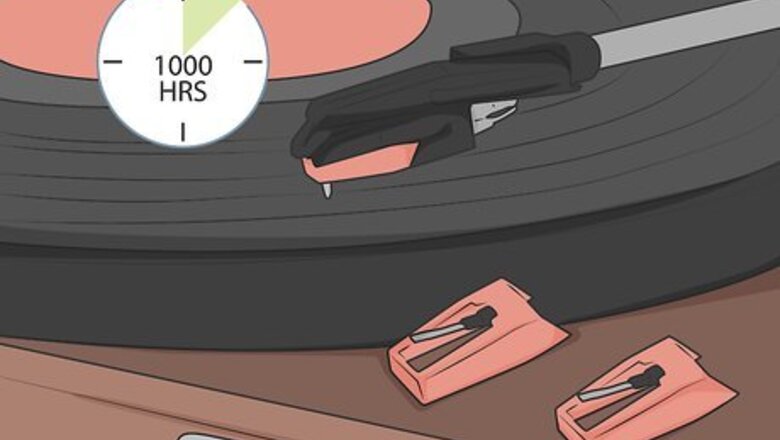
views
Replacing the Stylus
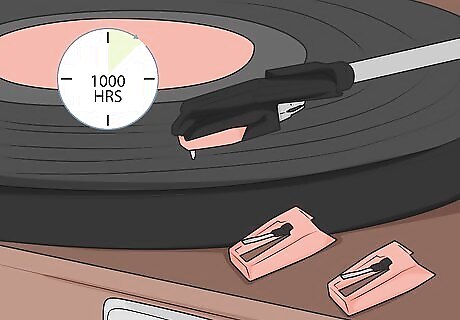
Change your stylus after 1,000 hours of play or every 3-5 years. The stylus refers to the needle and the piece of plastic connecting it to the cartridge and tone arm. The needle and plastic are always connected as one piece and it is designed to be easy to replace. The stylus wears out over time, so replace it after 1,000 hours of use or after 3-5 years, whichever comes first. Replacing the stylus will ensure that your sound remains accurate and your records stay safe. If the stylus is worn out, you’ll notice a scratchy, distorted sound coming out of your records when you play them. It’s easy to hear when a stylus needs to be replaced. If you continue to use a damaged stylus, it may damage your vinyl records. The tone arm refers to the arm that you move to raise and lower your needle. The cartridge is the piece that the stylus plugs into underneath the metal case (called a headshell). The stylus and the cartridge work together to actually read the sound coming out of a vinyl record.
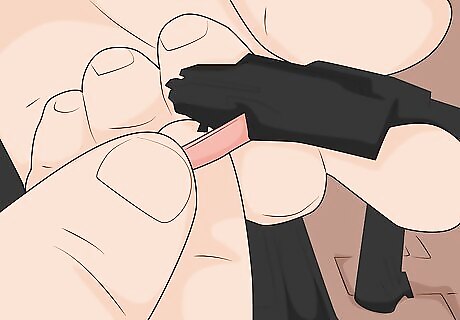
Remove the old stylus by sliding it out carefully. Unplug the record player and hold the arm still by pinching the headshell with your nondominant hand. Then, use your dominant hand to grip the plastic or metal case surrounding the stylus. Pinch the sides and pull the old stylus out. Slide the stylus away from the cartridge while keeping it parallel to the tone arm to avoid damaging the cartridge. Some turntables are different, but this will work on the vast majority of models. If you can’t pull the stylus straight out, look up your turntable’s model online to find the instruction manual. If the stylus is built into the cartridge, you’ll need to replace the entire cartridge. Some styluses are built into the frame of the piece that connects to the headshell. If your turntable has any locking mechanism or latch near the counter-weight at the end of the tone arm, use it to lock the tone arm in place while doing this.
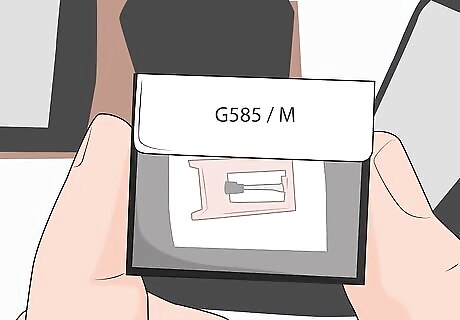
Look up your stylus’s model number to order a replacement. Turn the stylus around in your hand to look for letters or numbers. If you find any, this is the model number. Type the model number into a search engine online followed by the word “stylus.” Compare your stylus to the model that you find online to make sure that they’re identical. Purchase a replacement from the manufacturer or a third-party retailer. You can take the stylus to a record repair shop and ask them to look up and order a replacement for you, but you may not have one of these shops near you. The model number will be the only piece of writing on the stylus. The model numbers are usually a short combination of letters and numbers, like “A805” or “MT49.” If your stylus doesn’t have a model number printed on it, you’ll need to search for your turntable’s model online.

Order a different type of stylus if you want to upgrade your sound. Instead of ordering a replacement stylus, look online to find compatible styluses for your turntable. There are 4 main stylus models, and each has their own benefits and drawbacks. Check a stylus manufacturer’s website to find out if a new stylus will fit on your brand of turntable. Keep in mind, unless you have a great ear, you may not recognize much of a difference between your stock stylus and the new needle. Stylus Models: Spherical, or conical styluses are the cheapest version of stylus on the market. Your original stylus is likely a spherical model. They tend to be a little larger, and may cause distortion if they can’t trace smaller grooves in your vinyl records. They are cheap though, and they can be easily replaced. Elliptical styluses, also known as bi-radial styluses, are slightly better than spherical modes. They’re designed to track smaller groves more accurately, although they tend to wear out a little faster than spherical models. Hyperelliptical, or shibata needles offer phenomenal sound and feedback. However, they have a tendency to fall out of grooves more often and are somewhat expensive. These styluses are often called fine line or stereohedron needles as well. Micro-ridge, or microline styules are the most advanced needles on the market. They have ridges in the tip that help keep them in the grooves of a record. However, they tend to be extremely expensive compared to other models.
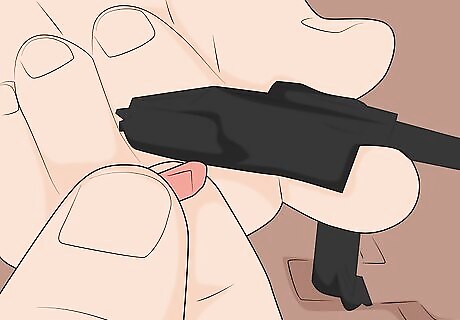
Slide the new stylus into the cartridge with the needle pointing down. Brace your record player’s tone arm with your nondominant hand by holding the headshell still. Then, orient your stylus so that the needle is pointing down and away from the tone arm. Slide the stylus into the cartridge and press it into the slot until you hear a click. Once the new stylus is attached, you’re ready to enjoy your records! Wear rubber gloves when you handle your new stylus and avoid touching the needle. The stylus is perfectly aligned when it comes out of the box and touching it may damage the needle’s ability to accurately track the grooves in a record. Some styluses won’t make a clicking noise. So long as the stylus is attached and flush with the slot on the cartridge, you should be fine.
Changing the Cartridge
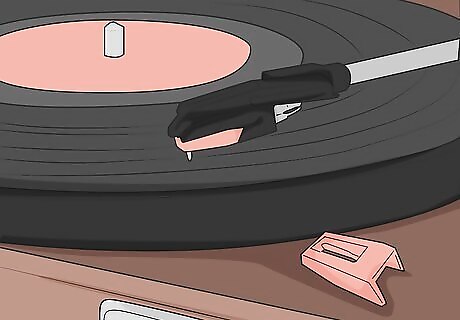
Replace your cartridge if your old piece is damaged. Cartridges typically last a longer time than styluses, and you really don’t need to replace a cartridge unless it’s damaged. However, after the stylus, the cartridge is the most likely piece to require replacement. The cartridge and stylus work together to produce sound from your records so it is extremely important that your cartridge is working properly. You can tell if your cartridge is damaged if the sound cuts in and out. It definitely needs to be replaced if you already changed the stylus and the sound is still distorted. Many audiophiles believe that upgrading the cartridge improves the sound. You probably won’t notice much of a difference though, unless you have a great ear for subtle tones and textures.

Purchase a replacement cartridge online by searching for your turntable. While most cartridges can only hold a specific type of stylus, many record players can use a variety of cartridges. Search your turntable’s brand and model number online to look for a replacement. You can buy a cartridge that is identical to the original model or upgrade your audio system with a fancier substitute. When looking to upgrade your cartridge, look for cartridges with an aluminum cantilever and a trackability of 60 µm or higher. Aluminum cantilevers tend to be the most consistent, while a high trackability will ensure accurate sound.Variation: If you have an entry-level model and don’t see any wires sticking out under the headshell, your cartridge likely snaps into place. This is a common design for Crosley, Audio Technica, or Sony turntables. These cartridges are automatically aligned and don’t need to be adjusted. 1. Unplug your record player.2. Try pulling on the cartridge gently to see if it pops off. If it doesn’t, try turning the bracket in between the cartridge and the tone arm counterclockwise to loosen it. Once this bracket is loose, your cartridge will pop out of the slot.3. Take your replacement cartridge and line it up with your tone arm so that the stylus is pointing out. Slide the cartridge into the opening so that the 4 prongs on the cartridge slide into the 4 slots in the tone arm. If you had to twist the bracket in between the cartridge and tone arm to get the old cartridge out, twist the bracket in the opposite direction to tighten the new piece.4. Press the cartridge into the slots until you hear a clicking noise to finish replacing your cartridge.
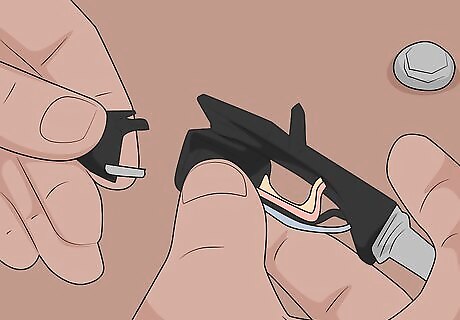
Remove the stylus and disconnect the wires if necessary. Unplug your record player. Take the stylus out of the cartridge by bracing the headshell and sliding it out by hand. If you have a higher-end record player and can see wires under the headshell, use a pair of needle-nose pliers to gently pull each of the 4 wires out of the back of the cartridge. Only use as much pressure as necessary to slide each wire out of the slot that connects the cartridge to the tone arm.Tip: The wires are color-coded. Blue and green are the left and right grounds, while white and red are the left and right positives. If the slots on your cartridge aren’t color-coded, draw a simple diagram of the order of the wires so that you can reinsert them in the proper slots. The colors are often labeled with letters: G (green), R (red), H (white), and L (blue). There is a plastic sleeve that covers the connection where the wire meets the metal terminal at the end. Use this piece to grip and pull your wires. It will provide a lot of traction without messing with the sensitive terminals at the end of each wire. Set your stylus aside after removing it by placing it upside down on a clean towel to keep it safe. You can put on rubber gloves and pull these wires out by hand if you have a steady hand and plenty of room to work with. If you bend the terminals that plug into the cartridge, you’ll need to take your record player to an electronics repair store.
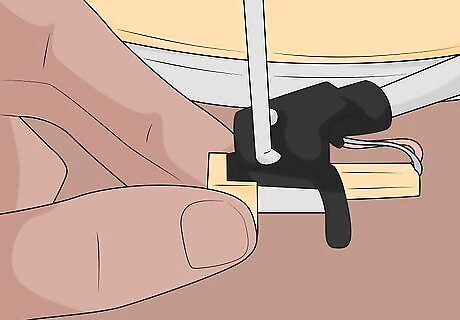
Use a small flathead screwdriver to remove the screws on top. There are 2 screws connecting the cartridge to the headshell. Grab a flathead screwdriver with a small head. Hold the tone arm in place with your nondominant hand and unscrew these screws by turning them counterclockwise. With the screws removed, slide the cartridge out of the slot by hand. If you have washers and nuts on the screws, set them aside in a small bowl so that you don’t lose them.
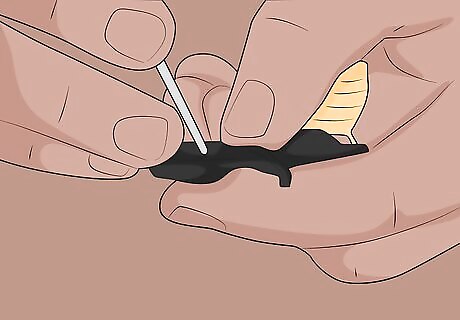
Hold your new cartridge’s screw slots under the headshell if it’s screwed in. Take your new cartridge and hold it by the back half as you press it into the bottom of the headshell. Adjust the location of the cartridge until the openings at the top of the headshell align with the screw slots for your new cartridge. You won’t damage your cartridge by touching it so long as you don’t press on the location where the stylus slides into the front. Hold your cartridge by the back end to avoid damaging this area.
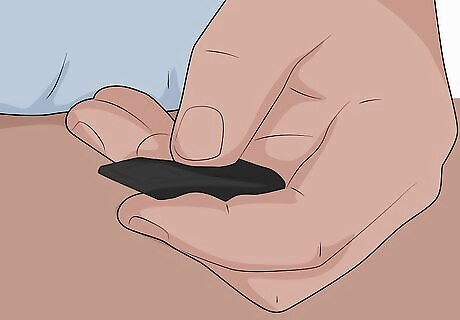
Align your cartridge so that the sides are flush with the headshell. Before you screw your new cartridge into the headshell, adjust the location of the cartridge to align the needle with the tone arm. To do this, place your fingers around the sides of the cartridge while bracing it from the bottom. Once the sides of your cartridge are flush with the headshell, check the front of the cartridge to see if it matches the top of the headshell. Adjust it as needed until the 2 sides and the front of your cartridge match the headshell. You can use an alignment protractor to check the path of your stylus. To use one, place your grid over the slot on the platform for your records. Then, place the needle in the middle of the grid. If your cartridge is parallel with the lines on the protractor, your stylus is aligned.
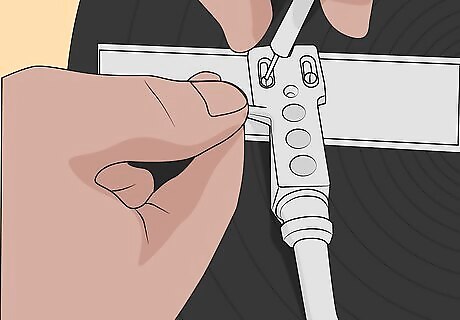
Insert your new screws and attach the cartridge to the headshell. Insert your replacement screws into the openings at the top of the headshell. If your model has washers and nuts, put the washers over the screws first before adding your nuts. Use your flathead screwdriver to tighten each of the screws while holding the cartridge in place with your nondominant hand. Turn the screws clockwise until they won’t turn any further to ensure that your cartridge stays firmly in place while you’re using your record player. These screws are really small and the slots for them can be quite fickle. This may take you a few tries to get it right. If there isn’t a ton of room for you to reinsert your wires, it may help to not tighten the screws all the way so that you can move the cartridge around a little.
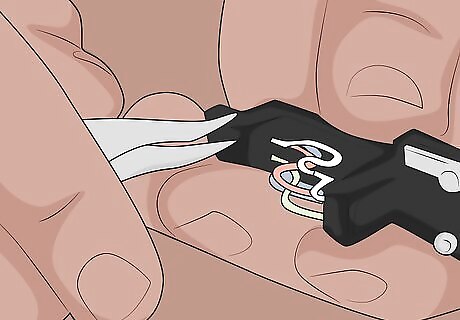
Reinsert the wires into the corresponding slots on the cartridge. Gripping each piece by the plastic sleeve, use your pliers to carefully slide each wire into the assigned slots on the cartridge. Keep each terminal on the end of each wire as straight as you can as you slide it into the slot. These wires can be quite sensitive, so work slowly and carefully to ensure that you aren’t applying too much pressure. If the new cartridge isn’t color-coded or labelled, use your diagram or refer to the old cartridge to see which order you need to insert the wires.
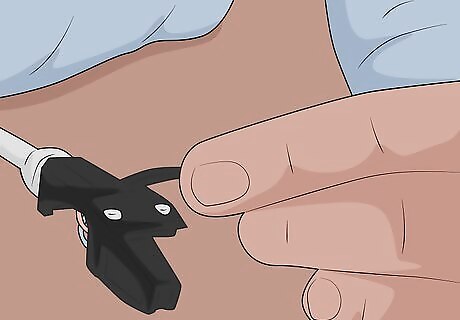
Reattach your stylus to finish replacing the cartridge. With your wires connected and the screws tightened, reinstall your stylus. Hold it around the side of the case and slide it into the opening at the front of the cartridge. Once you hear a click, your stylus is attached. Enjoy your new cartridge and stylus! Many cartridges come with new styluses already installed. If your cartridge comes with a stylus, don’t bother replacing it unless you have to.



















Comments
0 comment